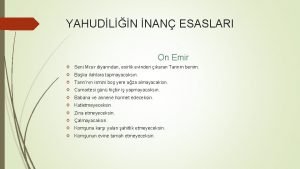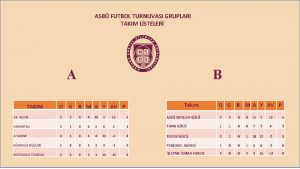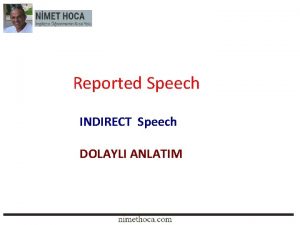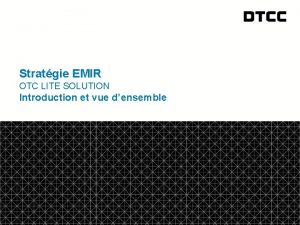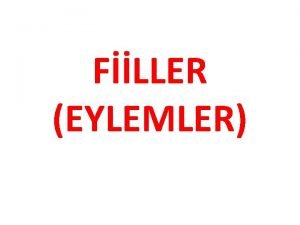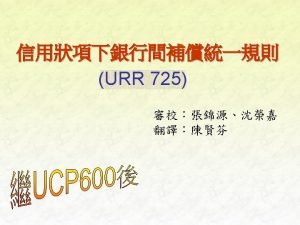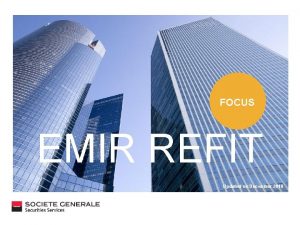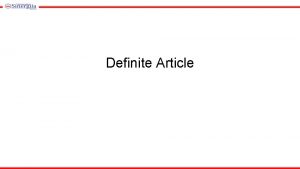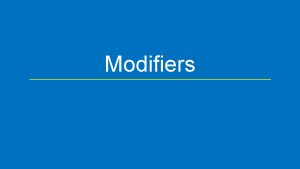Default Management Default Management EMIR Article 48 outlines









- Slides: 9

Default Management

Default Management • EMIR Article 48 outlines the key responsibilities of a CCP in managing a default; the need to have ‘detailed procedures in place’ and to review those procedures annually. • Article 48 also requires a CCP to ‘ take prompt action to contain losses and liquidity pressures resulting from defaults and shall ensure that the default management ‘does not disrupt it’s operations or expose the non-defaulting clearing members to losses they cannot anticipate or control. ’ • Article 48 also outlines requirements for communication, legal enforceability and the porting of client positions and collateral. It states that where the ‘transfer to that other clearing member has not taken place… the CCP may take all steps permitted by its rules to actively manage its risks ’ • Article 58 of the ESMA technical standards outlines that ‘A CCP shall test and review its default procedures to ensure they are both practical and effective. A CCP shall perform simulation exercises …. . ’to ‘verify that all clearing members… are duly informed and know the procedures involved in a default scenario’. 2

Default Management Waterfall • Default fund sized according to EMIR requirements and is subject to detailed modelling • LME Clear capital contribution will be 25% of regulatory capital • One mandatory replenishment • One or more variation margin haircuts for "in the money" Members (to ensure that LME Clear is able to continue to have funds to meet the Default Loss) • Waterfall is ‘per default’ and EMIR require LMEC to maintain ‘minimum’ default fund at all times • Recovery plan culminates in ‘full tear up’ per metal if necessary • Business viability review triggered by any utilisation of unfunded portion of waterfall 3

Default Management Overview Default declaration Client Porting • Internal Default • 4 Hour porting Management Committee window; convened • Client porting can be • Contact with Bank of facilitated by LMEC England key after the 4 hours. regulators • Contact clients and • Contact with Insolvency port ISA accounts Practioner • Net OSA account • Board and BRC means collateral Communication highly unlikely to port; attempt to port entire • Default Notice Published account(s). • Non-cash collateral sold if • Positions may be needed ‘partial ported’ from • Positions close to delivery net OSA account addressed • Porting may not be possible. Hedging • LMEC enters market through network of default brokers Auction • Mandatory for LMEbase and LMEprecious services • • Position hedged to tolerance agreed by DMC • • Dedicated support from traders in event of default Separate auction for each service Participants incentivised to bid, i. e. Juniorisation of DF contributions • Non-ported client • Potential to split defaulting positions combined with portfolio into multiple groups house account for of positions as separate hedging auctions • Ability to re-run auction if unsuccessful • Failed auctions means either further hedging or close-out 4

Default Management Communications • LME Clear will inform the regulator before a default is notice is issued. • A notice of default will be published on the LME website. • Regular information will be disseminated throughout the default period to inform members of the progress of the default management process. • Notification made on website of actions taken with regard to maturing positions or other LMEC actions that may impact exposures of clients. • Members that have agreed to receive the positions of clients of the defaulting Clearing Members will be contacted to confirm their acceptance of the portfolio and arrange the porting process. • Where client contact information is available and in priority of their risk mitigation potential, LMEC will attempt to transfer clients to new Clearing Members. 5

Default Management Risk Mitigation Process • Information gathering on detailed Member positions to provide trading and hedging view, together with significant client positions and financial status of portfolio versus collateral. • Liquidity assessment carried out to identify requirements and to provision for necessary supporting cash flows to mature. • Net maturing positions rolled forward for both house and client accounts to prevent delivery situations occurring. • House positions; – – Liquidate key exposures in outright positions Identify large spreads or options to be reduced Use prearranged default broker network Prepare neutralised portfolio for auction 6

Default Management Porting Process Within rules agreed with Bo. E and capabilities to control risk, LMEC will endeavour to transfer client positions wherever possible. • ISA’s; – Transfer positions and collateral of all identified clients to new Clearing Members. – Where Clearing Member declines client, positions will be liquidated and net proceeds returned to client. • OSA’s; – Clients will, where identified, be ported in accordance with the rules and procedures of LME Clear. – If possible, transfer will be undertaken, or risk reduced and remaining positions combined with auction portfolio. – Proceeds post liquidation and auction paid back to administrator for onward distribution. 7

Default Management Mandatory Auction Process • Auction portfolios will be separate for LME Base and LMEprecious contracts. • LME Base; Mandatory for members with a history of positions, as defined within the Rulebook, for all contracts in each auction. • LMEprecious; Mandatory for clearing members to submit a bid for each auction regardless of whether they have positions. • Further eligibility criteria detailed with the Rulebook, including credit rating. • LME Clear have the ability to split defaulting portfolio to form multiple separate groups of positions as separate auctions. • Auctions portfolio will be provided in pre-agreed format of positions sent in file to all bidding Members. • Participants to bid on full portfolio with one clear winner for each auction. • Fifteen minute window in which participants can bid repeatedly if necessary. • The Default Management Committee, DMC, will decide the winner of the auction in accordance to the Rulebook. • Winning bid identified and member notified - ‘on risk’ immediately with portfolio transferred as soon as possible in consultation with winning bidder. • Default fund contribution juniorisation to apply where losses require use of the default fund. 8

Default Management Fire Drills • At least 4 fire-drills are performed annually, out of which 1 will be an external fire-drills including clearing members. • Test internal default management process; – – – – Internal and external communication process, Information gathering Default broker interaction Client porting assessment and transfers Liquidity assessment Liquidity and collateral management Key supplier failure and failover test Specific risk scenarios e. g. settlement bank failure • Test auction process; – File publication and receipt by members – Mock bid process on theoretical portfolio – Full position transfer mechanism 9
